The Great Wall of China is a series of fortifications , built along an east-to-west line across the historical northern borders of China in part to protect the Chinese Empire or its prototypical states against intrusions by various nomadic groups or military incursions by various warlike peoples or forces. The Wall was made a UNESCO World Heritage Site in 1987.
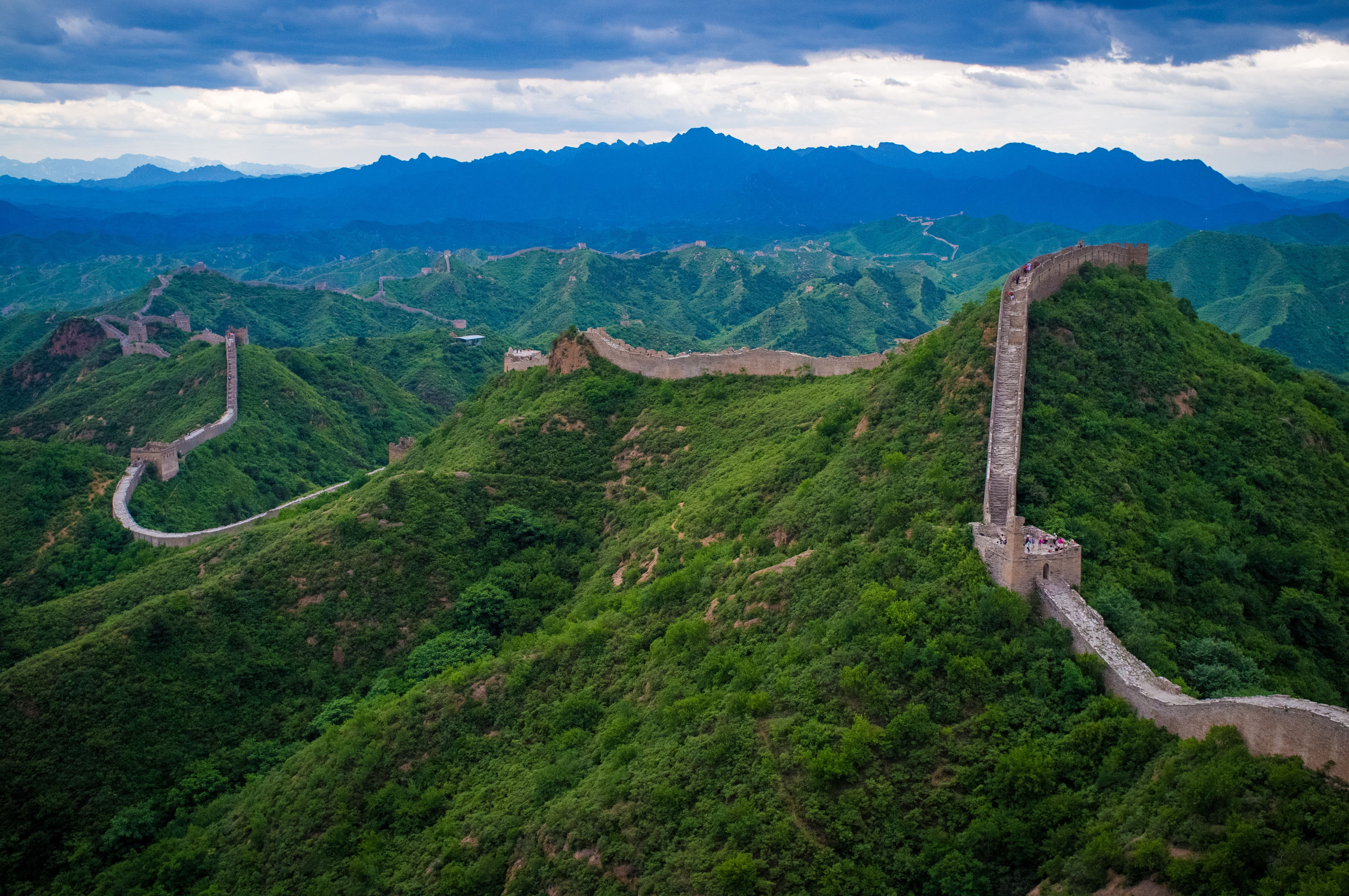
Image source: https://search.creativecommons.org/photos/42cb36ab-76a7-47c5-89c5-97580ce4b2a0 by Severin.stalder
Where is THE GREAT WALL ?
The Great Wall stretches across North China from east to west for over 6,000 kilometers. It extends from the shanhai pass at the seaside in the Hebei province in the east to the Jiayu pass in Gansu province in the west. The sites of the Great Wall stretch across 15 provinces of China. But since the great wall in Beijing is very long and protected well while most of the great walls in other China areas are not kept well and opened for tourists, it is commonly thought Beijing is the only place to see the Great Wall.
![Greatwall China [1907] Herbert G. Ponting [RESTORED]](https://live.staticflickr.com/2500/4071712625_caeb647420_b.jpg)
When was the Great Wall of China built?
The Great Wall of China was not built all at one time. In 7th and 8th century BC, battles happened frequently among the states of the Spring-Autumn and Warring States dynasty and in order to defend themselves they began to built walls and towers on the borders. It was the state Chu who first built the wall. It was during the Qin Dynasty that the kingdom of Qin united the different parts into one empire. To defend off the invasions from northern invaders, Emperor Qin Shi Huang had all the walls joined up. Thus, the Great Wall came into being.
Since then, the Great Wall was rebuilt, modified or extended throughout Chinese history for over 2,000 years by millions of Chinese people drafted in for the task. The primary purpose was always to protect the Chinese Empire from the Mongolians and other invaders. Most of the current Great Wall we see today was built in the Ming Dynasty (1368-1644) and is approximately 6000km long.
Why was the Great WalL built?
The Great Wall of China was built to protect China from its enemies and invaders from the North, especially the Mongols. The Mongols were a tribal group that would regularly conduct raids into China. Despite the wall, the Mongols eventually conquered China. The Wall also kept Chinese citizens from leaving China.
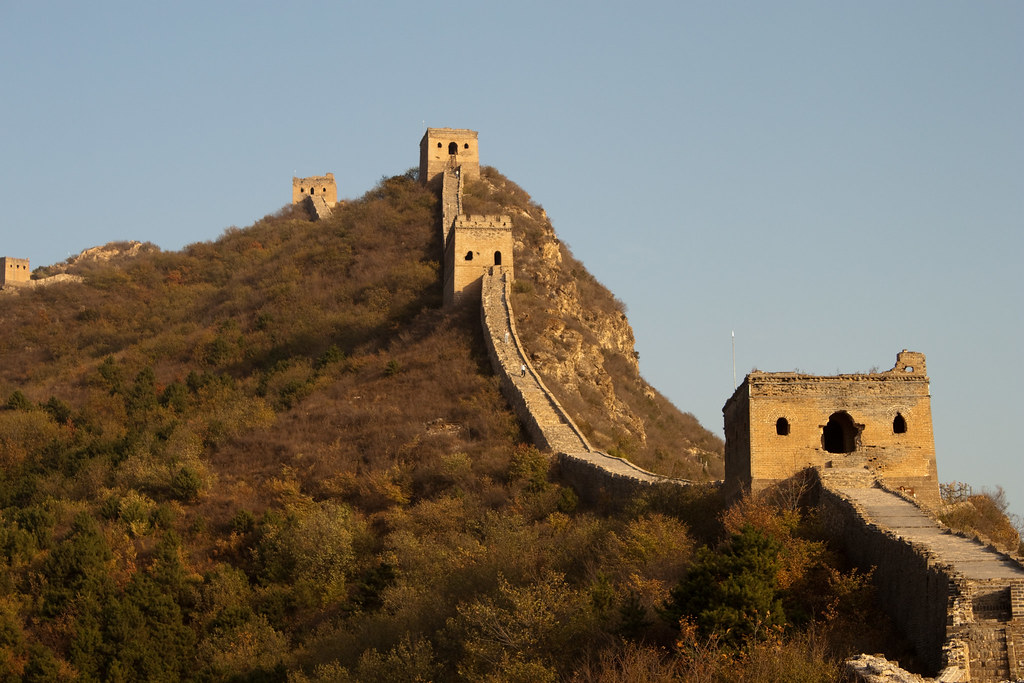
Image source: https://search.creativecommons.org/photos/03fd0b43-2039-4a84-9b2a-312293350906 by matt512
Actually, China is not the only country in history that built wall along its boundary. Athens, the Roman Empire, Denmark and Korea all did so at certain time in the past. The Hadrian’s Wall in northern England, built “to separate the Romans from the barbarians”, extended 117 kilometres from Wallsend-on-Tyne in the east to Bowness-on-Solway in the west. All the walls were built for the purpose of military defense, and the Great Wall of China was no exception
The Great Wall of China, originally built in the seventh century B.C, worked as a defence for the feudal states of the Zhou Dynasty (1046-771ad) to the north. During the Warring States Period more walls were put up to defend the borders of the different kingdoms. Qin Shi Huang united the different parts into one empire and had all the walls joined up to defend off the invasions from northern invaders.
The Great Wall was the greatest military defense project in the history, and it was also the guarantee of the peace and stability of ancient society and agriculture.
In over 2000 years ago, the Great Wall had been serving as an effective way for defense in China history. As a product of the clashes between agricultural and nomadic economies, the Great Wall provided protection to the economic development and cultural progress, safeguarded the trading routes such as the Silk Road, and secured transmission of information and transportation.
Who built the Great Wall of China?
Millions of the people constructed the Great Wall. The labor force to build the Great Wall includes workers, soldiers, forcibly recruited peasants, slaves, convicts and war prisoners.
The Great Wall stretches across North China from east to west for over 6,000 kilometers. It extends from the shanhai pass at the seaside in the Hebei province in the east to the Jiayu pass in Gansu province in the west. The sites of the Great Wall stretch across 15 provinces of China.
How was the Great Wall of China built?
It was very difficult to build such a wall in the ancient days without any modern machines. The construction of the Great Wall was mainly done by hand. The large stones, earth, wood and bricks were carried on human’s back or lifted by the bar. Simple machines were also used, such as varied handcarts, crowbars and wheels. Horses and donkeys were also used to transport the materials.
Thousands of men died and were buried under the wall they built.
The Great Wall was originally built in the Spring and Autumn but it was mainly built from earth, stones, and wood.
Based on the technology available at different dynasties, the Great Wall was usually built with compacted earth and stone which was found in the local area. Natural terrain such as mountain ridges was often taken advantage of to form part of the wall. West Han Dynasty (206 B.C.-25 A.D.), for example, used sand and crushed stones filled with layers of reeds or tamarisk twigs to build the wall in grasslands and desert areas that are subject to strong wind erosion.
During the Ming Dynasty, bricks were heavily used in many areas of the wall. The size and weight of the bricks made them easier to work with than earth and stone, so construction quickened. Additionally, bricks could bear more weight and endure better than rammed earth. Stone can hold under its own weight better than brick, but is more difficult to use. Consequently, stones cut in rectangular shapes were used for the foundation, inner and outer brims, and gateways of the wall.

Image source: https://search.creativecommons.org/photos/af1ffcf5-2c7b-4912-b4d0-e847dc370c1d by ▓▒░ TORLEY ░▒▓
What are the 3 major components of the wall?
The Great Wall had three major components: passes, signal towers (beacons), and walls.

Image source: http://leahbaker2.weebly.com/facts.html
- PASSES
Passes were major strongholds along the wall, usually located at such key positions as intersections with trade routes. The ramparts of many passes were faced with huge bricks and stones, with dirt and crushed stones as filler. The bastions measured some 30 feet (10 metres) high and 13 to 16 feet (4 to 5 metres) wide at the top. Within each pass were access ramps for horses and ladders for soldiers. The outside parapet was crenellated, and the inside parapet, or yuqiang (nüqiang), was a low wall about 3 feet (1 metre) high that prevented people and horses from falling off the top. In addition to serving as an access point for merchants and other civilians, the gate within the pass was used as an exit for the garrison to counterattack raiders or to send out patrols. Under the gate arch there was typically a huge double door of wood. Bolts and locker rings were set in the inner panel of each door. On top of each gate was a gate tower that served as a watchtower and command post. Usually it stood one to three stories (levels) high and was constructed either of wood or of bricks and wood. Built outside the gate, where an enemy was most likely to attack, was a wengcheng, a semicircular or polygonal parapet that shielded the gate from direct assault. Extending beyond the most strategic wengchengs was an additional line of protection, the luocheng, which was often topped by a tower used to watch those beyond the wall and to direct troop movements in battles waged there. Around the gate entrance there was often a moat that was formed in the process of digging earth to build the fortifications.

Image source: https://search.creativecommons.org/photos/7077bb5c-ad6b-43ea-9785-4c94dce19360 by firepile
- SIGNAL TOWERS
Signal towers were also called beacons, beacon terraces, smoke mounds, mounds, or kiosks. They were used to send military communications: beacon (fires or lanterns) during the night or smoke signals in the daytime; other methods such as raising banners, beating clappers, or firing guns were also used. Signal towers, often built on hilltops for maximum visibility, were self-contained high platforms or towers. The lower levels contained rooms for soldiers, as well as stables, sheepfolds, and storage areas.
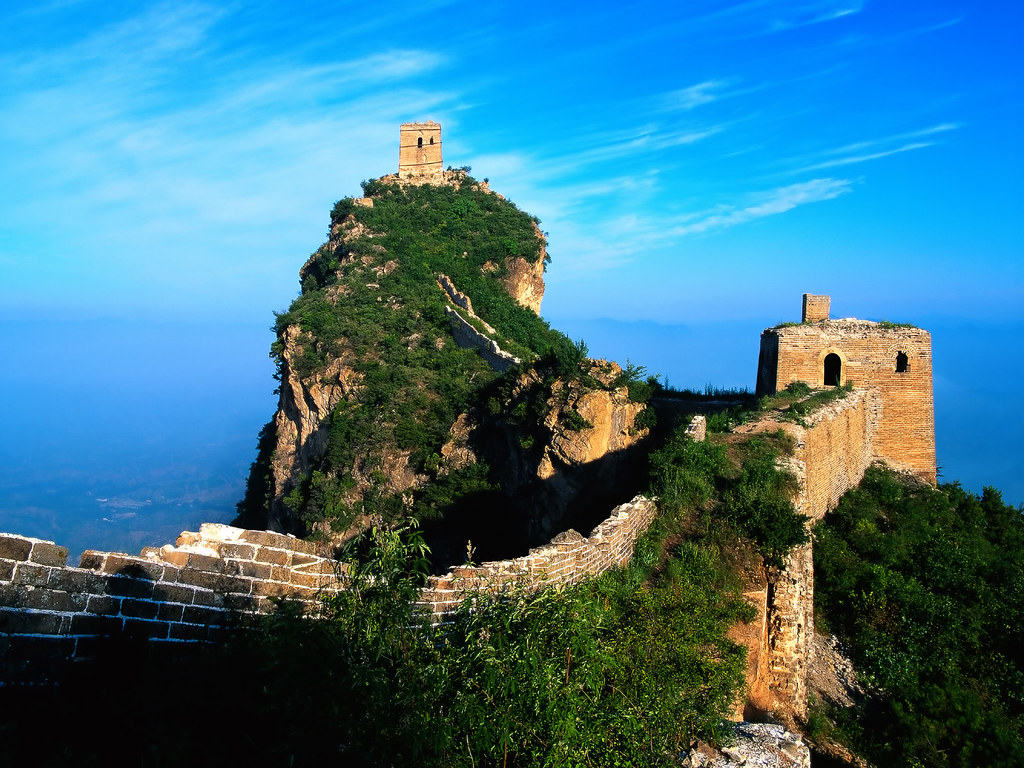
Image source: https://search.creativecommons.org/photos/439bb9d6-5550-4014-b920-af5a933911cc by victoria white2010
- WALLS
The wall itself was the key part of the defensive system. It usually stood 21.3 feet (6.5 metres) wide at the base and 19 feet (5.8 metres) at the top, with an average height of 23 to 26 feet (7 to 8 metres), or a bit lower on steep hills. The structure of the wall varied from place to place, depending on the availability of building materials. Walls were made of tamped earth sandwiched between wooden boards, adobe bricks, a brick and stone mixture, rocks, or pilings and planks. Some sections made use of existing river dikes; others used rugged mountain terrain such as cliffs and gorges to take the place of man-made structures.
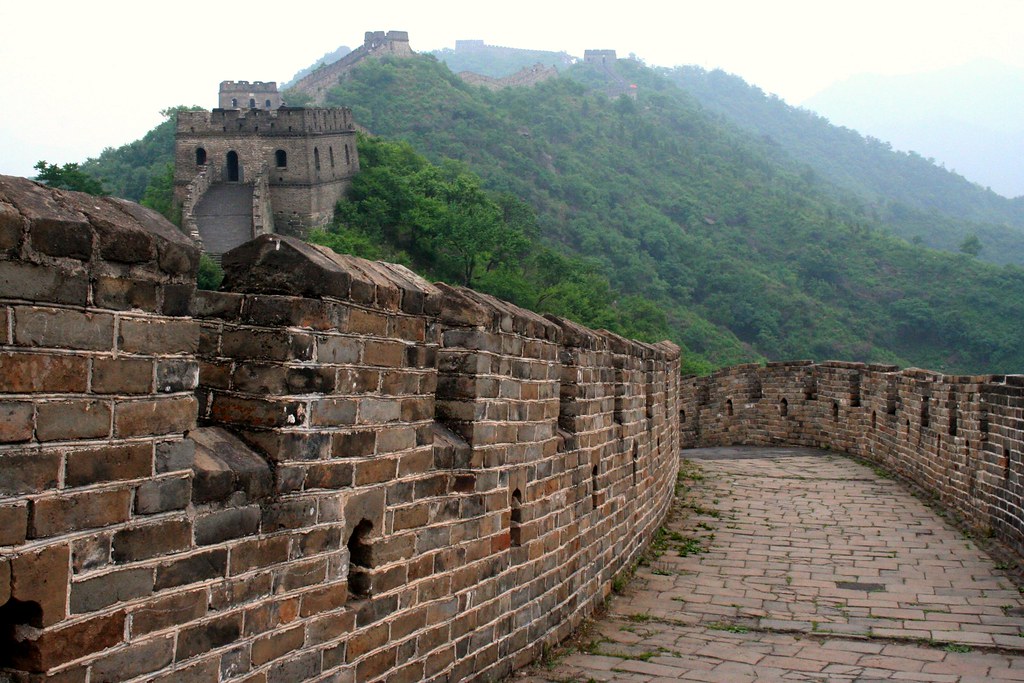
Image source: https://search.creativecommons.org/photos/89bd4033-6de3-4285-80b5-2aa2d8802ce8 by firepile
In the western deserts the walls were often simple structures of rammed earth and adobe; many eastern ramparts, such as those near Badaling, were faced with stone and included a number of secondary structures and devices. On the inner side of such walls, placed at small intervals, were arched doors called juan, which were made of bricks or stones. Inside each juan were stone or brick steps leading to the top of the battlement. On the top, on the side facing outward, stood 7-foot- (2-metre-) high crenels called duokou. On the upper part of the duokou were large openings used to watch and shoot at attackers, and on the lower part were small openings, or loopholes, through which defenders could also shoot. At intervals of about 650 to 1,000 feet (200 to 300 metres) there was a crenellated platform rising slightly above the top of the wall and protruding from the side that faced attackers. During battle the platform provided a commanding view and made it possible to shoot attackers from the side as they attempted to scale the wall with ladders. On several platforms were simply structured huts called pufang, which provided shelter for the guards during storms. Some platforms, as with signal towers, had two or three stories and could be used to store weapons and ammunition. Those at Badaling commonly had two stories, with accommodations for more than 10 soldiers on the lower level. There were also drainage ditches on the walls to shield them from damage by excessive rainwater.
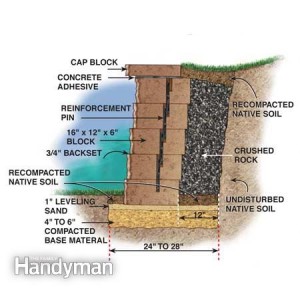
Image source: http://www.familyhandyman.com/landscaping/retaining-wall/how-to-build-a-concrete-block-retaining-wall/view-all
Info sources:
https://www.britannica.com/topic/Great-Wall-of-China
http://www.crystalinks.com/greatwallofchina.html
http://www.chinatravellers.com/Artcle_Show.asp?id=165
